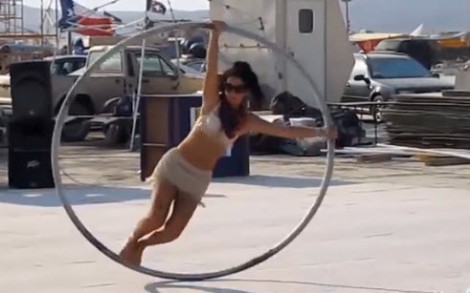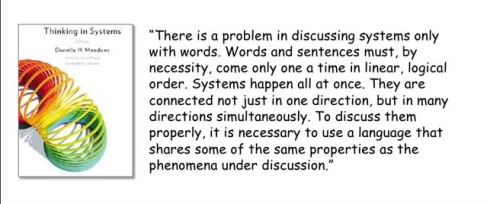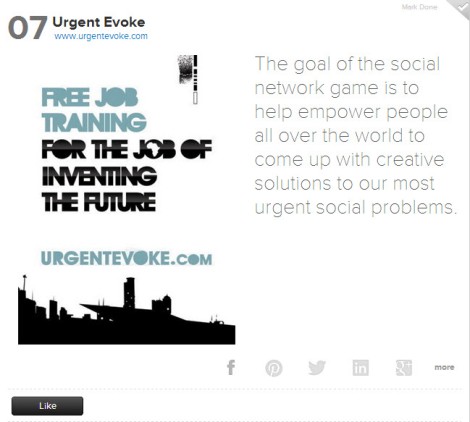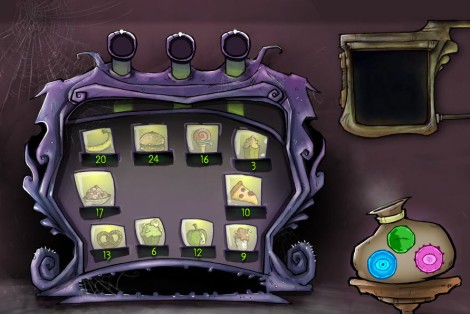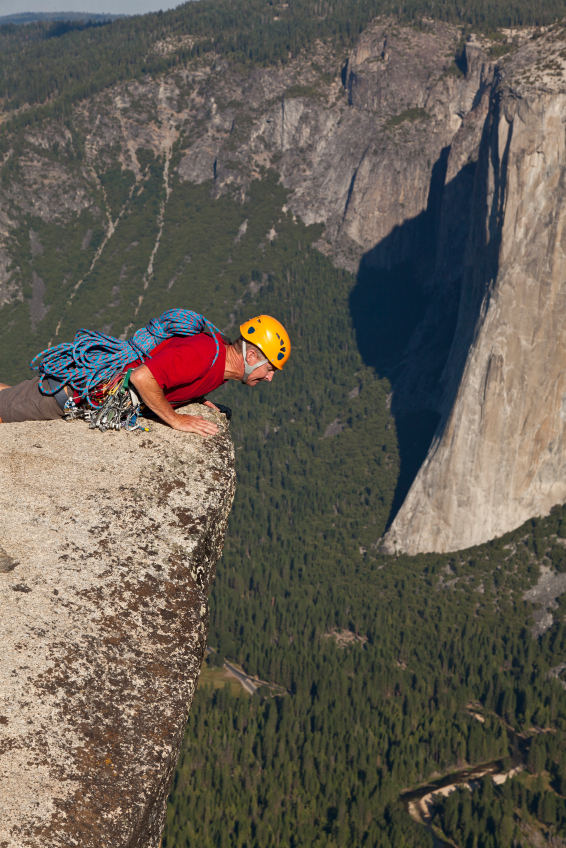February 9, 2015 New U.Lab Dreaming
THIS IS THE DREAM I HAD THIS EARLY MORNING – 2.9.15
I went to a live play — with an African-American theme — attended by a mixed race audience. Half way through the play suddenly stops. Just like that: stops! I was very impatient and irritated. How rude to just stop the play. I felt that it was an insult to the theme and to the people it was about – African Americans.
The audience was left to complain amongst themselves. I told a few of the organizers that I thought it was quite thoughtless to do such a thing. They informed me that this was designed on purpose. It was supposed to stop midway and leave the audience hanging in the silence.
I eventually met the author of the play. She clarified her purpose: “There is more to our story than endlessly retelling and re-retelling our story in the context it has always been told. I left you hanging so you could find the “new”. I purposely disrupted the past.”
WAKING FROM THE DREAM
The alarm goes off and I realize, now awake, that in my dream I had descended to the bottom of the “U” below anything that had happened in the past, below the base of the inverted hierarchy of power. It’s no accident that I was reading about this very thing in Leading From the Emerging Future just before going to sleep.
RELATED IN REAL LIFE
I lived in West Africa for three years during the early 1970s. During this time I recorded music and provided sound for a series of documentaries in Burkina Faso, distributed by African Family Films. Besides the cultural exposure I was also able to experience being a minority for a significant amount of time at a very formative period of my life (early twenties). This left me with a foundational view that life can be very different in a different culture/geography. What I experience at any moment in time from my culture and in my town is certainly not the only reality one can experience.
Life in the bush in the early 1970s was very much like life in the savannah 10,000 years ago. The only difference consisted of the addition of three technologies: bicycles, radios and gas lamps. Minus these technologies, I was experiencing village life as it has been for millennia, since the dawn of the agricultural revolution. Most striking about life in a West African village is the dignity with which people carry on with their everyday tasks. Some young boys are tempted to the big city, but they soon find that reality wearing and difficult.
These experiences have informed and enriched my experiences with African Americans because I have been able to see both cultures: the un-traumatized Africans and the remnants of trauma experienced by African Americans due to slavery. Because of this, one of my chosen charities is the Southern Poverty Law Center.
** = Zindy Zone drawings: http://zindy-zone.dk/html/drawings/coal/dreaming_beauty.htm
- Leave a comment
- Posted under Uncategorized
February 9, 2015 U.Lab MIT Course: Transforming Business, Society and Self
It’s been awhile!
I write when I am completely inspired and enthusiastic about something. And today I am. I found my way to Otto Scharmer’s MIT mooc: Transforming Business, Society and Self. It’s been terrific. I had Otto’s Theory U book on my shelf for a year or two, maybe since the Pegasus Systems Thinking conference came to Seattle. Faced with the flu and being in bed for days, I finally grabbed Theory U. Alas in my weak condition, I was too weak to hold up this big tome.
The ipad was more manageable if I propped it up against a pillow. So investigating Otto, I found my way to the MITcourse, and haven’t looked back. We are in Week 4 (5? if you count week 0). 26,000+ people have joined and we are dividing out into coaching circles using the Presencing Institute’s platform. Our recommended text is Leading from the Emerging Future by Otto Scharmer.
- Leave a comment
- Posted under Uncategorized
January 29, 2014 New Use for Hula Hoops?
http://www.tubechop.com/watch/1918091
I would love to try this. Oftentimes an innovation is just a modified version of an existing idea. I clipped this out of a YouTube video using TubeChop.
- Leave a comment
- Posted under Innovations
November 22, 2013 Global Ed Conference – 2013
Just finished the concluding session of the online Global Education Conference. As a volunteer moderator it was a thrill to be connected with creative people from all over the world in virtual presentation classrooms. It is the kind of experience that changes you forever. It opens a door that cannot be closed. Opportunities for connection are vast and it is clear that “the people” only want to work together, to love each other, to solve our big problems and work with youth to break down the barriers of geography, language, culture to engage and solve problems and celebrate our differences, promote our solidarity and just enjoy each others company. It’s hard to express the joy it gives me.
When I was two years old I recall fondly an event – the archetype of which surely echoes through my life to this day. This is the first time I have written about it. Playing out on the sidewalk in the sun I looked up to see a little boy my age. His face was completely black; his hair too was jet black. In a flash my toddler mind registered “different!” and then “good” almost simultaneously, and in a blink of an eye, different/good turned into delight. Difference is not a thing to fear; difference is a delight. Soon we were playing together happily in the summer sun.
The GlobalEd Conference revives this feeling in me with the added wisdom and responsibility of knowing that Yes! we can heal the world’s troubles – and without a doubt it can only be done together. You may be interested in following up on this conference and in that case you are in luck. The wealth of presentations have been captured in recordings and can be viewed here:
http://www.globaleducationconference.com/page/2013-conference-recordings
As an aside, I got to practice my moderator skills in Blackboard. I obtained a moderator’s certificate in Elluminate in 2009 and I was getting rusty. I also became more comfortable talking through a microphone, and solving connection problems in the sessions. The conference attracts people who have no trouble connecting across cultures. It is the tech connections that are pesky. I applaud the speakers who spent so much time and energy preparing and presenting. You are the heroes of the day.
Tags: #globaled13
- Leave a comment
- Posted under Online Conferences
November 7, 2013 Houston: We have a problem!
… with our language. As technology, innovation and change speed up, I have noticed that our language is not keeping up. It shows up in group discussions as participants attempt to describe a phenomenon or negotiate an understanding of something of shared value. We all use different descriptive language but all pointing in somewhat the same direction. It’s very messy.
Not only is our language not keeping up descriptively (I started a desktop publishing business before the word was invented) but our language (decidedly linear) is structurally incompatible with emerging and interrelated phenomenon such as we see in system dynamics.
Our shared language has no time to stabilize and I begin to wonder how we understand each other at all.
On the other hand, now that our static run-of-the mill knowledge is easily available online, it frees us up to tread into new non-linear cognitive territories such as systems thinking, gaming, design thinking, programming, and robotics, to name a few.
Now that I have written this down, I can forget it. Let the internet save it, and free up my brain space.
- Leave a comment
- Posted under Uncategorized
October 23, 2013 Urgent Evoke – Game by Jane McGonigal funded by World Bank Institute
I am finally getting around to posting about my experience (long ago now, 2010) with the Urgent Evoke game. From their website:
EVOKE was created by The World Bank Institute as a direct response to African demands – namely, universities’ request to develop ideas to engage students in real world problems and to develop capacities for creativity, innovation, and entrepreneurship. Developing nations face steep challenges, and resources in these areas can be limited. These challenges demand the most robust and innovative of solutions.
- Leave a comment
- Posted under Uncategorized
October 21, 2013 Think Know Tools – My question
Logan in The Extended Mind theorizes that there exists an evolutionary chain of languages (1-speech, 2-writing, 3-math, 4-science and 5-computing) each of which evolved when the “informatics capacity” of all previous languages failed to convey “some new level of complexity.” Recently he added a sixth language, the Internet and suggests that virtual reality and expert systems may represent the seventh and eighth languages. Can you identify the early signs, signals, trends, scenarios (futurist methodology) that exist to bolster his claims for the two emerging languages, and/or do you see other languages emerging. Give evidence. How does each emerging language address the new level of complexity we find in our present era, its’ possible, probable, and preferable future.
Another question I have would be impossible to answer: What did we give up in the way of capacities when humans acquired language and conceptual abilities? Was there some cognitive recycling of older more ancient dispositions?
- Leave a comment
- Posted under Uncategorized
October 14, 2013
We invent our technologies, and then our technologies reinvent us.
— Marshall MacLuhan
This encapsulates best the course I took from Rheingold U this summer: Think Know Tools.
Tags: McLuhan quote
- Leave a comment
- Posted under Think-Know Tools 2013
October 14, 2013 Playful Learning: a Workshop at Seattle Academy
When I signed up for the Playful Learning Day on Saturday September 28, 2013 I wasn’t sure what to expect. I was already familiar with two of the big names in educational gaming: Katie Salen and Jane McGonigal . In a former life I worked for Sierra Online (Sierra Studios) makers of the famous game HalfLife. I tried my hand at Minecraft but it made me dizzy. But still I needed to know more. There’s something games can bring to an educational setting — I can’t quite put my finger on it. John Seeley Brown points the way:
“It turns out that understanding play is critical to understanding learning. Play is the basis for cultivating imagination and innovation.”
In the spirit of play, I jumped in and it turned out to be a fabulous day. Much has happened in the educational gaming world since I last checked in.
Three presenters came to share their ideas, products and resources:
• Leslie Redd, parent of Andrew ’16, is on the leadership team of LearnBIG, an internet site that aggregates online games, simulations, videos, and course content making it easy to find online educational learning materials.
• Alex Chisholm, Co-founder and Executive Director of the Learning Games Network, formerly with MIT: Comparative Media Studies; game design trainer
• Allisyn Lecy, Vice President, GameUp at BrainPOP, Senior Director of Educator Experience
The day was a nice combination of theory, hands-on gaming and resource sharing. Alex started out by sharing the four deep structures of a good game. They are simple and powerful. A good game allows the player to experiment, fail, and to be in control of effort expended. A fourth structure is found in some games: the ability to control identity. Can school assignments be designed to take advantage of these engaging structures?
By the end of the first hour we were playing our first game: Lure of the Labyrinth: Employee Lounge. No instructions…a page of comics…press go. Now what…?
It was apparent to me that adults are more timid about exploring, more risk adverse. Eventually we solved the game and discovered, to our delight, that we were learning algebra. It just snuck up on us. We solved the game by continually asking the mother of all questions: “What if …?”
Leslie Redd introduced us to her start-up company LearnBIG, which launched just last month. It is a web service to help explorers everywhere to locate just the right resource for their learning projects. Six major website filters (including dozens of sub-filters) help to narrow down the list of possible resources. LearnBIG is very selective with the resources they enter into their database. The service is intuitive and easy to use and better than any curriculum database I have seen – ever! If you can’t find what you are looking for – it probably means it does not exist. In that case, and should you accept the challenge, you have a DIY project on your hands. (See the Game Design Toolkit below.)
No one wanted to leave for lunch, but eventually our appetites got the best of us. (And thank you to the Gates Foundation for providing lunch.) Upon our return we divided up into groups and worked to integrate a game into a lesson plan. My group worked with a math assignment: polynomials. We did not find a suitable game and were coached to use the Game Design Toolkit to have the kids design a polynomials game – a nice creative solution. Not every game one needs is out there yet. Apparently there is a lack of games for English and Literature topics and there are more games for the primary school grades, because that level of content involves fewer variables (i.e. the games are easier to make). I hope I am not overstating this but it seems to me like the educational gaming field has yet to bloom. But I must add it has come a long way in the last couple of years.
Allyson from the GameUp portion of BrainPop explored the BrainPOP site with us pointing out these free sections in particular: GameUp and the GamePop Educators community. Seattle Academy parents: your students can show you the subscription site as they have access to the id/password. I love BrainPOP because it is such a fun diversion from the typical databases that libraries offer.
The last section of our day consisted of all three presenters sharing major gaming resources with us. If anyone would like to have that list, please email me: kjohnson@seattleacademy.org
I am convinced that we are on the cusp of a revolution in thinking that will involve more fluid, dynamic, iterative and social processes with an emphasis on problem solving. Having run-of-the-mill, static knowledge at our fingertips frees us up to move into this new cognitive territory. Gaming – educational or otherwise – trains us to get comfortable with the ambiguous, to react in the moment, and build upon new knowledge as it is revealed. We can practice seeing patterns. Constraints become challenges. The player is empowered and in the right game, supported by the team. So I think you can tell, I was energized by the day and by the possibilities. I look forward to exploring and sharing more with anyone who is interested.
Tags: BrainPop; LearnBIG; Playful Learning;, games; gaming; Playful Learning;
- Leave a comment
- Posted under Workshops
July 5, 2013 MyBrain software
I just learned about the MyBrain software in my Think-Know Tools course with Howard Rheingold. I’m sold! This product is very efficient even though I’m not fond of the graphic display. It could be improved. But it is a great start for not only mindmapping but it is far more functional than that. Documents can be attached. Events can be flagged and put in your calendar, tags and types help you sort and prioritize “thoughts” and you can search through all of this content. Unbelievably cool. Here is an example of how an IT engineer might use the software.
And here is another example for writing and projects:
- Leave a comment
- Posted under Uncategorized


